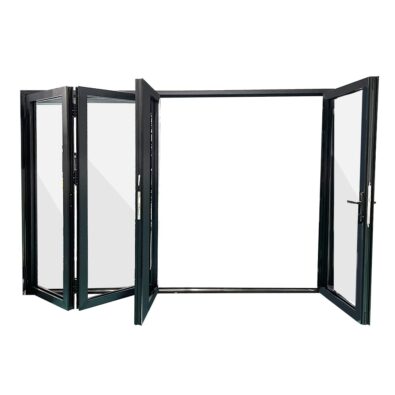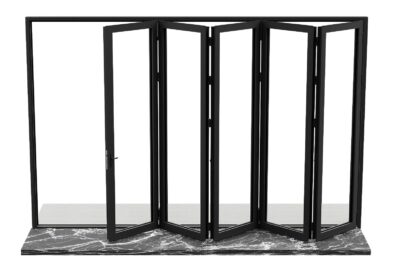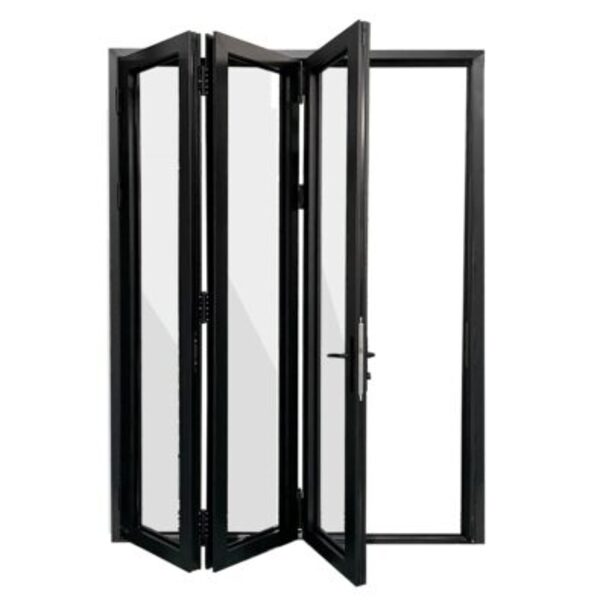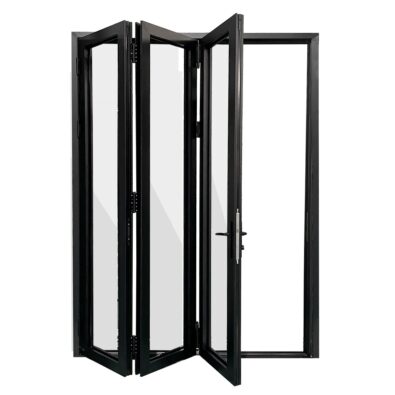Sealed with Strength: Weatherproofing Your Bifold Doors for Longevity

Strong 8k brings an ultra-HD IPTV experience to your living room and your pocket.
Introduction
The Importance of Weatherproofing Bifold Doors
Bifold doors have become a hallmark of modern architecture, appreciated for their ability to blur the boundaries between indoor and outdoor spaces. With their sleek folding mechanism and expansive glass panes, bifold doors enhance natural light, ventilation, and open living concepts.
However, their design and function also make them vulnerable to environmental elements — rain, wind, UV rays, and extreme temperatures. Without proper weatherproofing, these elegant doors can deteriorate prematurely, compromising both performance and aesthetics.
This Weatherproof Bifold Doors Guide will walk you through everything you need to know to ensure your bifold doors are sealed with strength and built to last.
Why Weatherproofing Matters for Bifold Doors
1. Protection from Environmental Elements
Bifold doors are frequently exposed to harsh weather — rain, snow, and direct sunlight. Without appropriate protection:
Timber may swell or rot
Metal may corrode
Paint and finishes may crack or peel
Weatherproofing helps prevent this degradation, preserving both function and form.
2. Improved Thermal Insulation
Poorly sealed bifold doors can allow drafts, leading to:
Heat loss in winter
Overheating in summer
Increased energy bills
Proper weatherproofing creates a tight seal, boosting energy efficiency and reducing heating/cooling costs.
3. Enhanced Comfort and Air Quality
Weather-sealed bifold doors help block out:
Cold air and hot drafts
Dust, pollen, and airborne allergens
Unwanted noise from outdoors
This results in a cleaner, quieter, and more comfortable living or working environment.
Weatherproof Bifold Doors Guide
Select Weather-Resistant Materials
The durability of your bifold doors begins with the material selection:
Aluminum: Corrosion-resistant and low-maintenance, ideal for humid or coastal areas.
uPVC: Offers strong insulation and is resistant to moisture and warping.
Engineered Timber: Visually appealing and durable when sealed correctly with water-resistant coatings.
Each material offers unique benefits depending on climate and usage, so choose wisely based on your location and design goals.
Use High-Performance Seals and Gaskets
Seals and gaskets are your first line of defense against water and air leaks. Look for:
EPDM rubber gaskets that remain flexible in extreme temperatures
Compression seals around door perimeters
Brush seals for bottom thresholds to prevent drafts and dust
Check seals periodically and replace them at the first sign of wear or damage.
Opt for Advanced Glazing
Glass makes up the majority of bifold door surface area. High-quality glazing enhances both thermal and weather protection:
Double or triple glazing increases insulation
Low-E glass reflects heat back into the room
Argon gas-filled units improve performance and reduce condensation
These features not only aid weatherproofing but also contribute to reduced energy costs.
Install a Proper Threshold System
Thresholds play a critical role in keeping water and debris out:
Choose rebated thresholds for enhanced sealing
Use integrated drainage systems to channel water away efficiently
Keep channels and weep holes clear of dirt and debris
Well-designed thresholds prevent water ingress and support long-term durability.
Apply Protective Coatings
For timber or aluminum frames:
Use microporous paint or sealants on wood to allow it to breathe while repelling moisture
Apply UV-resistant powder coatings on metal to prevent fading and corrosion
Recoat or touch up surfaces every few years depending on climate exposure
This step adds both aesthetic longevity and weather resilience.
Perform Regular Maintenance
Even the best weather proofing systems need routine care:
Clean tracks and hinges to ensure smooth operation
Lubricate hardware with silicone-based products
Inspect seals, frames, and panels every 6–12 months
Clear drainage channels and replace worn-out parts
Proactive maintenance prevents small issues from escalating into costly repairs.
Benefits of Weatherproof Bifold Doors
Weatherproofing bifold doors goes beyond aesthetics. Here’s what you gain:
Benefit
Impact
Energy Efficiency
Lower heating and cooling costs year-round
Enhanced Comfort
Fewer drafts, less noise, and stable indoor temperatures
Improved Durability
Protection against moisture damage and material degradation
Cleaner Indoor Environment
Reduced dust, allergens, and humidity
Long-Term Savings
Lower repair and replacement costs over time
Considerations for Different Environments
For Homes in Rainy or Coastal Areas
Choose aluminum or uPVC for corrosion resistance
Install deep drainage channels
Recoat frames regularly
For Homes in Sunny, Dry Climates
Use UV-resistant coatings
Opt for Low-E glass
Monitor wood finishes to prevent sun damage
For Commercial Spaces and High-Traffic Zones
Install heavy-duty seals and hardware
Choose materials that require low maintenance
Perform quarterly inspections for optimal performance
Conclusion
Long-Lasting Strength Starts with Weatherproofing
Bifold doors add unmatched style and functionality to any space, but their longevity depends heavily on how well they are protected from the elements. Through proper selection of materials, advanced sealing techniques, and consistent maintenance, you can dramatically extend the life and performance of your bifold doors.
This Weatherproof Bifold Doors Guide offers everything you need to keep your doors secure, efficient, and beautiful — season after season.
Don’t just install bifold doors — seal them with strength.
FAQs: Weatherproofing Bifold Doors
Q1. How do I know if my bifold doors need weatherproofing?
Look for signs like drafts, water leakage, increased noise, or condensation between panes. These issues usually indicate worn seals or inadequate protection.
Q2. Can I weatherproof existing bifold doors without replacing them?
Yes. You can upgrade seals, apply coatings, and install drainage features without a full door replacement.
Q3. What is the best material for weatherproof bifold doors?
Aluminum and uPVC are highly weather-resistant. Engineered timber is also excellent when properly treated and maintained.
Q4. How often should weatherproofing elements be inspected?
Every 6 to 12 months. In harsh climates, consider seasonal inspections, especially before monsoon or winter.
Q5. Does glazing type affect weatherproofing?
Absolutely. Double or triple glazing with low-emissivity coatings and gas filling significantly enhances thermal insulation and reduces condensation.
Note: IndiBlogHub features both user-submitted and editorial content. We do not verify third-party contributions. Read our Disclaimer and Privacy Policyfor details.






